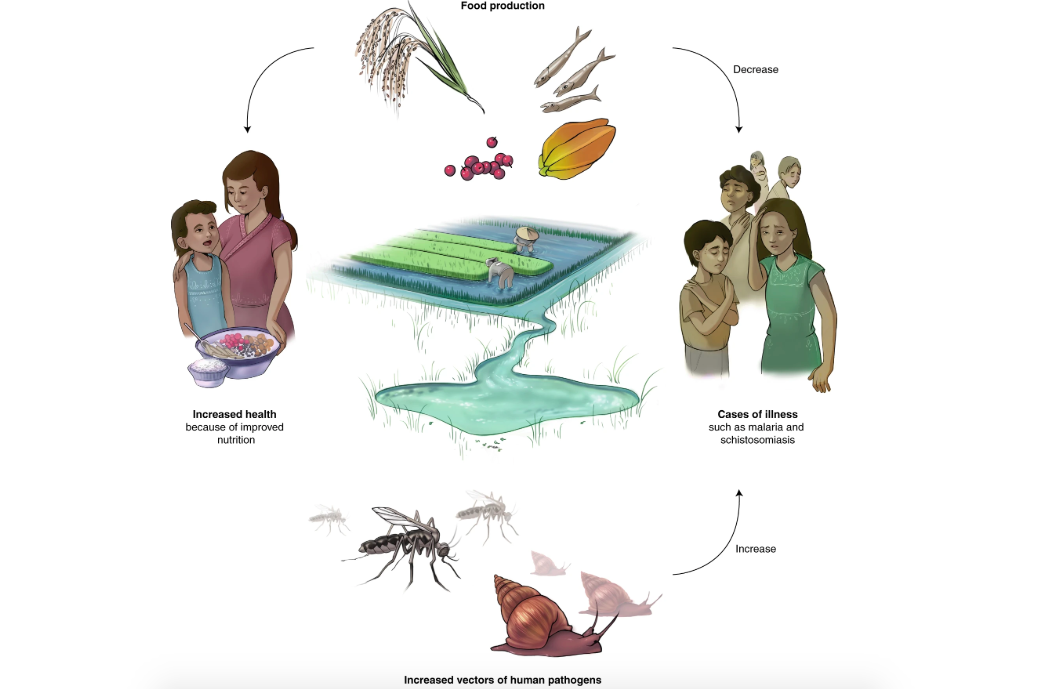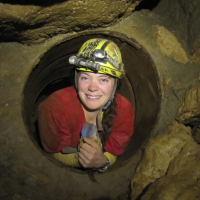“Ecological levers of health” are conservation interventions that have direct, measurable benefits to human health. For example, after a dam was built in Senegal and extirpated a native prawn species, schistosomiasis, a debilitating human infectious disease, increased dramatically. Restoring native prawns that prey upon the snail vectors of schistosomiasis reduces human risk. In fact, prawn restoration is expected to be more effective for controlling the disease than medical interventions alone. The Ecological Levers for Health group synthesized lessons learned from many such solutions that alleviate burdens of the world’s most important infectious human diseases while safeguarding or restoring ecosystems integrity and function.
OUR APPROACH: This working group is identifying clear links between infectious disease transmission, environmental change, and actionable solutions at local and regional levels. By synthesizing existing win–win solutions that can benefit people and nature, this team is contributing to Planetary Health research, investment, and evaluation agendas for the 21st century.

Ecological and Human Health are Connected
This team’s research has helped make clear that human health can decline when local and global ecosystems are degraded due to agriculture and aquaculture, urbanization and development, deforestation, overexploitation, and other conservation threats. Inversely, when human communities are unhealthy, people often cannot prioritize sustainability, leading to further ecosystem degradation. This cycle illustrates the interconnectedness and interdependence of ecological and human health.
Win–Win Solutions
The team collected examples of solutions that both reduce infectious human diseases and improve ecosystem integrity, using a systematic literature review and evidence synthesis. They found 47 proposed solutions and critically evaluated each example. Most solutions had some evidence gaps regarding safety, feasibility, and prior success, but most were also promising targets for future adaptive implementation. The group developed a decision hierarchy based on 11 viability criteria that can be used by researchers, funders, and decision-makers to evaluate and compare amongst potential Planetary Health interventions.
Intervention Example
In Indonesian Borneo, a key driver of forest loss is illegal logging conducted by individuals trying to meet their basic needs, especially health care needs. A non-profit organization built a clinic to improve rural health care and provided training in alternative livelihoods. Over the past decade, this community-derived solution has both improved human health and reduced illegal logging and forest carbon loss.

“We synthesized evidence to make a “menu” of actionable solutions that advance conservation and reduce human disease burdens. Our menu and the supporting evidence portal can be used by anyone to find and compare Planetary Health solutions.”
–Skylar Hopkins
This article from the National Center of Ecological Analysis and Synthesis describes how ecological levers for health can help to alleviate poverty
This synthesis of over 70 years of data revealed trends in human infectious disease and described the policy actions necessary to balance public health and agriculture.
Using examples related to human health and conservation, we illustrate how interdisciplinary problem-solvers can use this framework to assess relationships among targets and compare multi-target interventions that affect people and nature.
As sustainable development practitioners have worked to “ensure healthy lives and promote well-being for all” and “conserve life on land and below water”, what progress has been made with win–win interventions that reduce human infectious disease burdens while advancing conservation goals?
US Geological Survey (USGS)
Stanford University
Harvard University
Stanford University
Princeton University
Harvard University
National Center for Ecological Analysis and Synthesis (NCEAS), University of California, Santa Barbara
Stanford University
University of California, Santa Barbara
Bill and Melinda Gates Foundation
University of California, Santa Barbara
Stanford University
Stanford University
Stanford University
Wildlife Conservation Society Health Program
Stanford University
Griffith University
Montana State University
University of California, Berkeley
University of Vermont
Center for Large Landscape Conservation
The Nature Conservancy
University of Washington